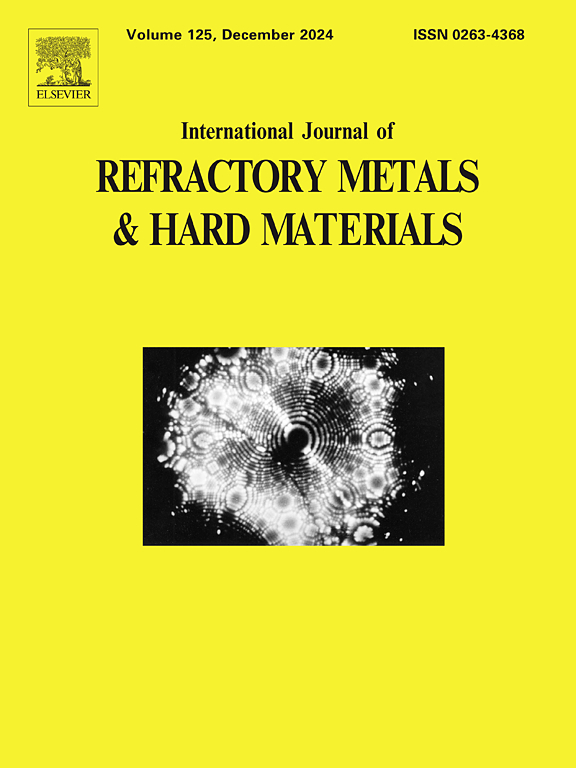激光线定向能沉积制备C103 Nb合金的优化与表征
IF 4.6
2区 材料科学
Q2 MATERIALS SCIENCE, MULTIDISCIPLINARY
International Journal of Refractory Metals & Hard Materials
Pub Date : 2025-07-09
DOI:10.1016/j.ijrmhm.2025.107318
引用次数: 0
摘要
尽管人们对使用增材制造技术制造耐火材料部件的兴趣越来越大,但由于粉末生产的困难,基于粉末的增材制造工艺面临挑战。本研究旨在首次采用激光线定向能沉积(LWDED)技术对具有代表性的Nb合金C103进行工艺优化和拉伸性能评价。结果表明,当激光功率低于2000 W时,熔池不均匀,而当激光功率超过2600 W时,由于反射导致线材过早熔化,阻碍了线材的正常沉积。在制备的样品中,C103的关键成分Hf在沉积过程中与大气中的氧气反应,在凝固细胞的边界处形成HfO 2。氧含量随激光功率和样品垂直高度的增加而增加。拉伸试验表明,屈服强度超出ASTM B654标准10%以上。我们的研究结果表明,LWDED是一种高效的制造耐火材料部件的技术。本文章由计算机程序翻译,如有差异,请以英文原文为准。
Optimization and characterization of C103 Nb alloy fabricated by laser wire directed energy deposition
Although there is growing interest in manufacturing refractory components using additive manufacturing techniques, powder-based additive manufacturing processes face challenges due to the difficulty of powder production. This study aimed to optimize the process and evaluate the tensile properties of C103, a representative Nb alloy, using Laser Wire Directed Energy Deposition (LWDED) for the first time. The results revealed that a uniform melt pool did not form at laser powers below 2000 W, while at powers exceeding 2600 W, the laser beam caused premature wire melting due to reflection, preventing proper deposition. In the fabricated samples, Hf, a key constituent of C103, reacted with atmospheric oxygen during the deposition process, forming HfO₂ at the solidification cell boundaries. The oxygen content increased with higher laser power and vertical sample height. Tensile testing showed that the yield strength exceeded the ASTM B654 standard by more than 10 %. Our findings suggest that LWDED is an efficient and effective technique for manufacturing refractory components.
求助全文
通过发布文献求助,成功后即可免费获取论文全文。
去求助
来源期刊
CiteScore
7.00
自引率
13.90%
发文量
236
审稿时长
35 days
期刊介绍:
The International Journal of Refractory Metals and Hard Materials (IJRMHM) publishes original research articles concerned with all aspects of refractory metals and hard materials. Refractory metals are defined as metals with melting points higher than 1800 °C. These are tungsten, molybdenum, chromium, tantalum, niobium, hafnium, and rhenium, as well as many compounds and alloys based thereupon. Hard materials that are included in the scope of this journal are defined as materials with hardness values higher than 1000 kg/mm2, primarily intended for applications as manufacturing tools or wear resistant components in mechanical systems. Thus they encompass carbides, nitrides and borides of metals, and related compounds. A special focus of this journal is put on the family of hardmetals, which is also known as cemented tungsten carbide, and cermets which are based on titanium carbide and carbonitrides with or without a metal binder. Ceramics and superhard materials including diamond and cubic boron nitride may also be accepted provided the subject material is presented as hard materials as defined above.

 求助内容:
求助内容: 应助结果提醒方式:
应助结果提醒方式:


